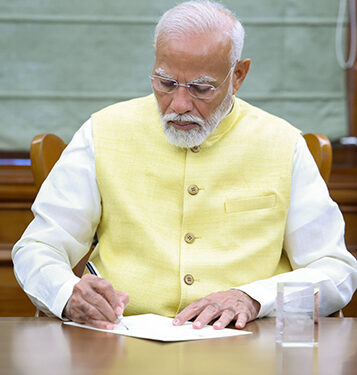NE BUSINESS BUREAU
NEW DELHI, JAN 17
The Union Cabinet has approved the implementation of the 8th Pay Commission to revise salaries of nearly 50 lakh Central government employees, Union Minister Ashwini Vaishnaw announced on Thursday. The implementation of the 8th Pay Commission will not only lead to salary hikes for the Central government employees, but also an adjustment in the Dearness Allowance (DA).
The 8th Pay Commission will also revise the pensions and allowances of 65 lakh Central government retirees. Government employees and retirees had long been expecting a revision of their pay scales, which is now possible with the setup of the 8th Pay Commission.
The announcement that the Union Cabinet has approved the 8th Pay Commission has come days ahead of the Budget 2025 announcements.
While Ashwini Vaishnaw has confirmed that the Cabinet has approved the 8th Pay Commission for Central government employees, the exact date for its setup has not been announced yet.
Ashwini Vaishnaw has, however, announced that the commission will likely be formed by 2026. According to the reports, the 8th Pay Commission will come into force on January 1, 2026.
Ashwini Vaishnaw said the chairman and two members will soon be appointed to oversee the rollout of the 8th Pay Commission.
The decision to set up the 8th Pay Commission was taken at a meeting of the Cabinet chaired by Prime Minister Narendra Modi, I&B Minister Ashwini Vaishnaw said in the announcement.
He said, “For your awareness, our Prime Minister has approved the establishment of the 8th Central Pay Commission for all Central government employees.”
Ashwini Vaishnaw said the setting up of the new Pay Commission in 2025 will ensure that its recommendations are received well before the completion of the term of the seventh pay panel. Vaishnaw said consultations will be held with central and state governments and other stakeholders.
The 7th Pay Commission was set up in 2016, and its term will end on December 31, 2025. Ahead of the end of term for the 7th Pay Commission, a decision has been taken to set up the 8th Pay Commission to revise the salaries of the Central government employees.
Earlier Pay Commissions
1st Pay Commission May 1946 – May 1947
Chairman: Srinivasa Varadachariar – Key Features
- Focused on rationalizing the pay structure after India’s independence.
- Introduced the concept of the “living wage.”
- Minimum salary: ₹55/month; maximum salary: ₹2,000/month.
- Beneficiaries: Around 1.5 million employees.
2nd Pay Commission August 1957 – August 1959
Chairman: Jaganath Das – Key Features:
- Focused on balancing the economy and living costs.
- Recommended the minimum wage of ₹80/month.
- Introduced the “socialistic pattern of society.”
- Beneficiaries: Approximately 2.5 million employees.
3rd Pay Commission April 1970 – March 1973
Chairman: Raghubir Dayal – Key Features:
- Recommended minimum pay of ₹185/month.
- Emphasized salary parity between public and private sectors.
- Addressed inequalities in the pay structure.
- Beneficiaries: About 3 million employees.
4th Pay Commission September 1983 – December 1986
Chairman: P.N. Singhal – Key Features:
- Recommended a minimum salary of ₹750/month.
- Focused on reducing disparities in salaries across ranks.
- Introduced a performance-linked pay structure.
- Beneficiaries: Over 3.5 million employees.
5th Pay Commission April 1994 – January 1997
Chairman: Justice S. Ratnavel Pandian – Key Features:
- Recommended a minimum pay of ₹2,550/month.
- Suggested reducing the number of pay scales.
- Focused on modernizing government offices.
- Beneficiaries: Around 4 million employees.
6th Pay Commission October 2006 – March 2008
Chairman: Justice B.N. Srikrishna – Key Features:
- Introduced Pay Bands and Grade Pay.
- Minimum salary: ₹7,000/month; maximum salary: ₹80,000/month.
- Emphasized performance-related incentives.
- Beneficiaries: Nearly 6 million employees.
7th Pay Commission February 2014 – November 2016
Chairman: Justice A.K. Mathur – Key Features:
- Minimum pay raised to ₹18,000/month; maximum pay ₹2,50,000/month
- Recommended a new pay matrix instead of the grade pay system.
- Focused on allowances and work-life balance.
- Beneficiaries: Over 10 million (including pensioners).










